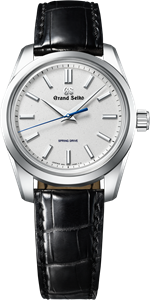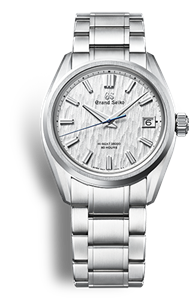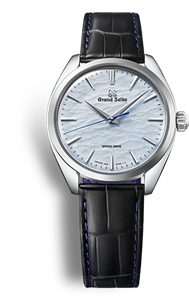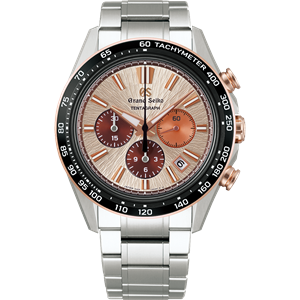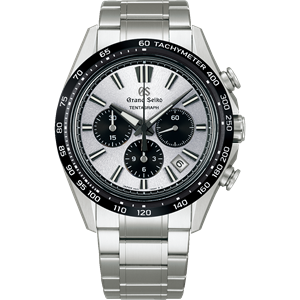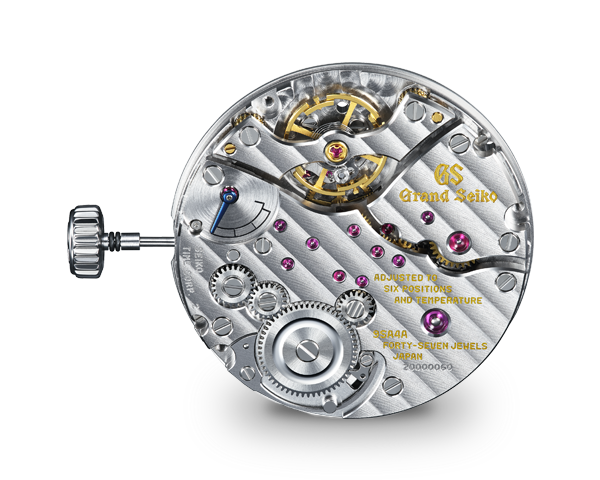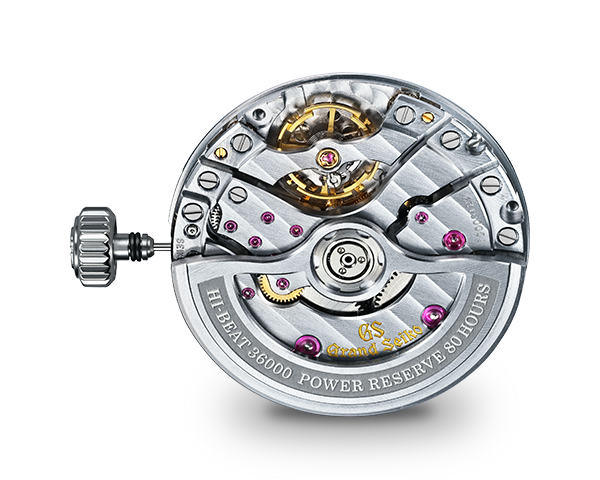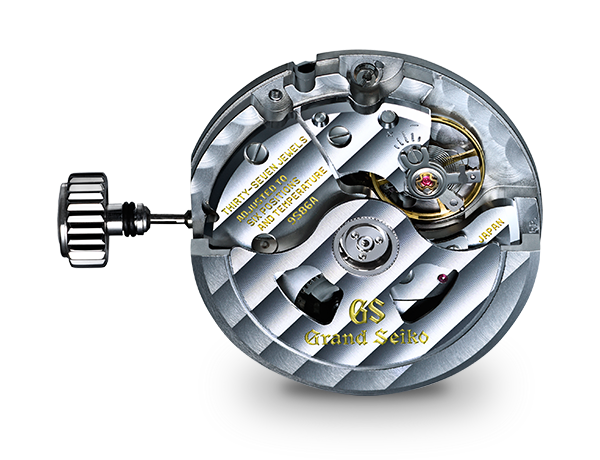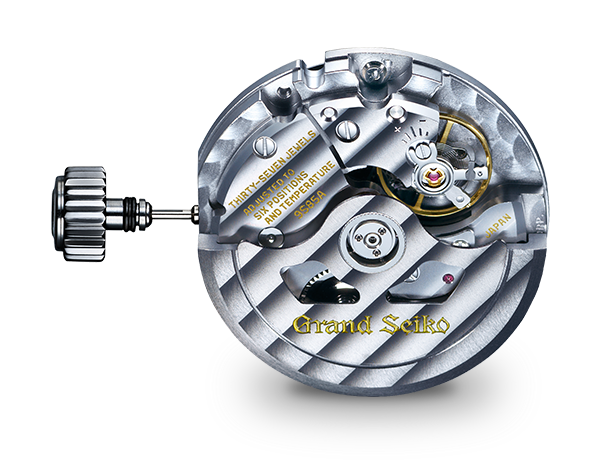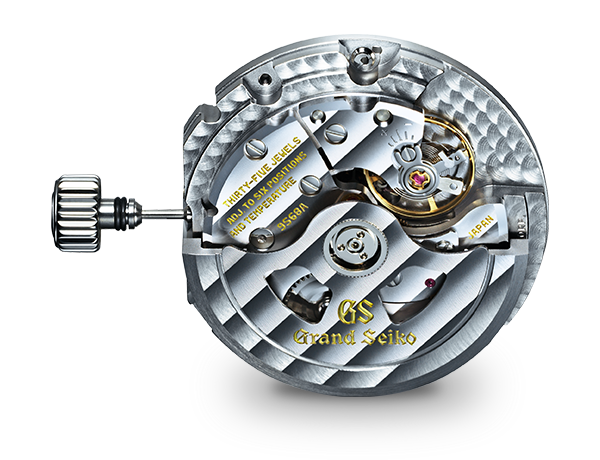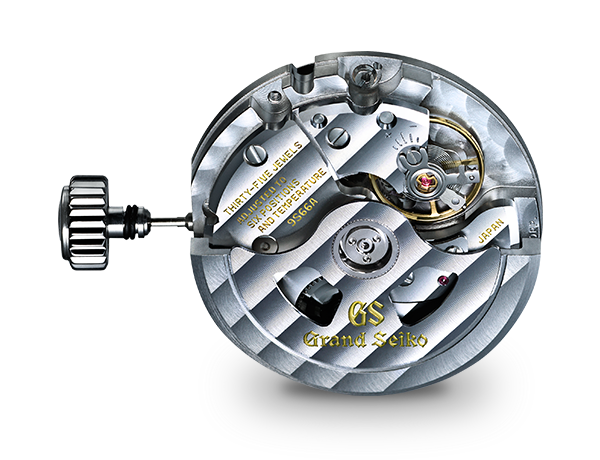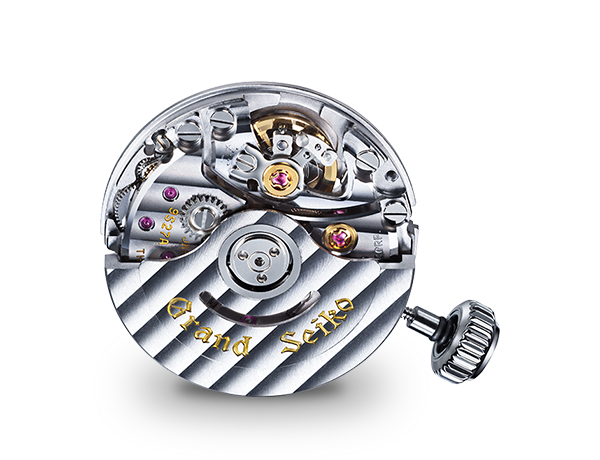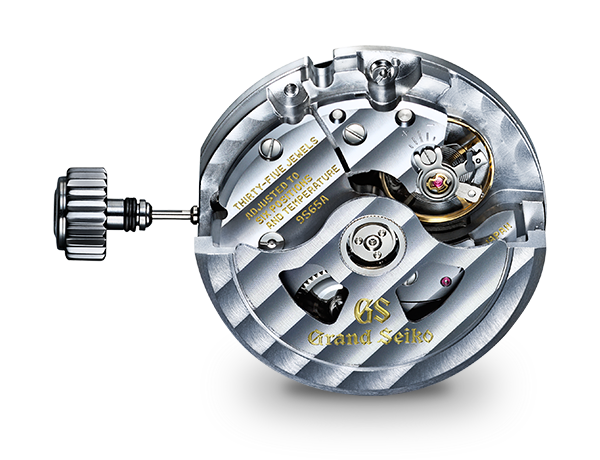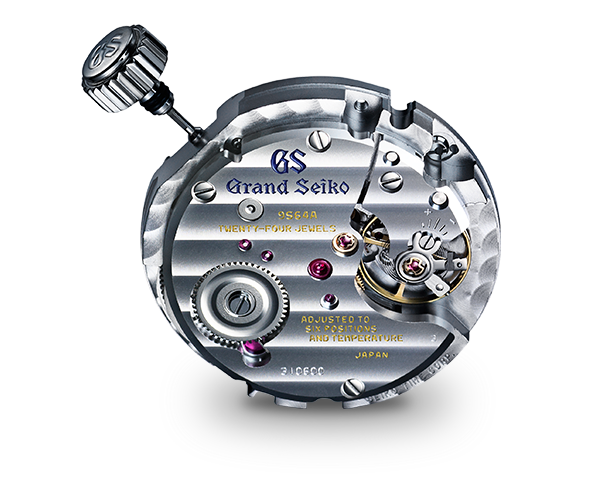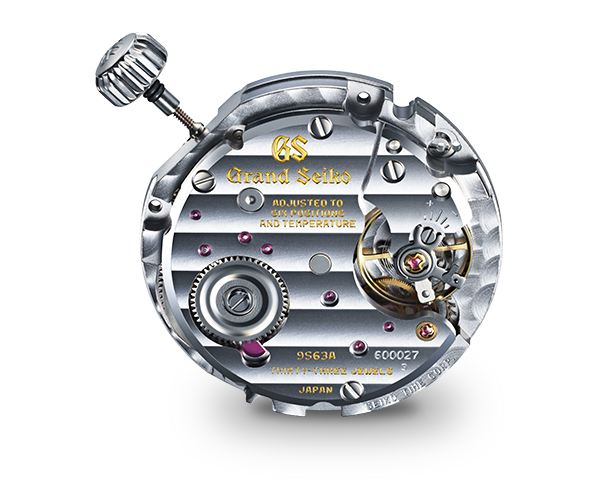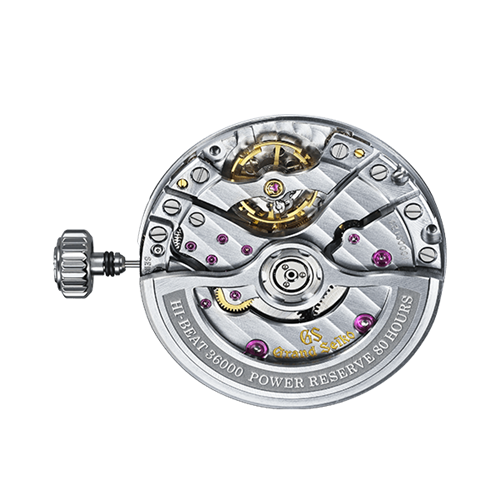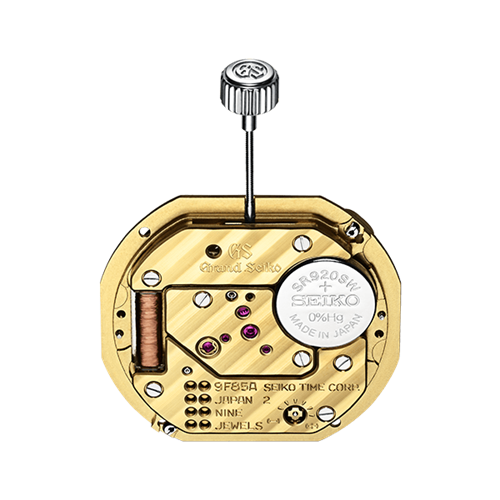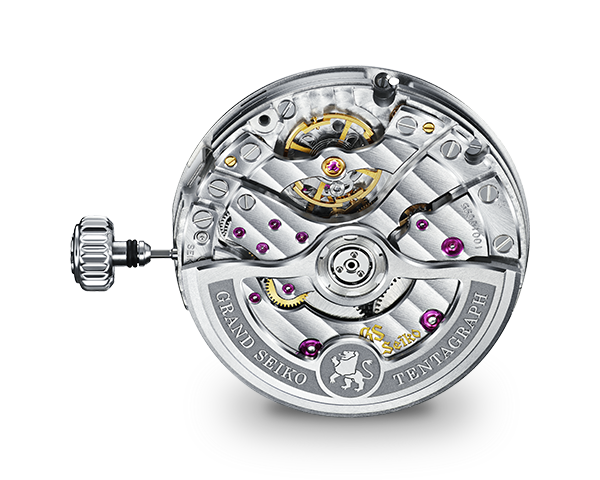
Hi-Beat 36000 3-Day Chronograph
Caliber 9SC5
In 2023, Grand Seiko's first mechanical chronograph, the Tentagraph, was born.
The Tentagraph's name describes the characteristics of the Caliber 9SC5 that powers this watch: "TEN beats per second", "Three days of power reserve", "Automatic," and "chronoGRAPH. A high-beat chronograph that symbolizes the next generation of Grand Seiko watchmaking, the Tentagraph Caliber 9SC5 has 72 hours of power reserve (approximately 3 days) even when the chronograph function is in operation, making it the ten-beat chronograph with the longest power reserve in the industry today. *
*Grand Seiko research as of March 2023
Spezifikationen
| Antriebssystem | Automatic with manual winding |
|---|---|
| Mittlerer Tagessatz*1 | +5 to -3 seconds per day |
| Ganggenauigkeit bei normalem Gebrauch | +8 to -1 seconds per day |
| Gangreserve | Approximately 72 hours |
| Schwingungen | 36,000 vibrations per hour (10 beats per second) |
| Steine | 60 jewels |
| Bemerkungen | -Chronograph
-Dual Impulse Escapement -Twin barrels |
- Der mittlere Tagessatz ist ein Mittelwert der Tagessätze in einem Zustand, in dem die Bewegung vor der Montage in einem Gehäuse in sechs Positionen auf festgelegte Weise in künstlich kontrollierter Umgebung für 12 Tage gemessen wird.

The First Grand Seiko Mechanical Chronograph Ever Created
Its birthplace was the Grand Seiko facility in Shizukuishi, where, for many decades, craftsmen and women have been responsible for the design and manufacture of all Grand Seiko mechanical watches. It was here, too, that the first 9S movement had been created.
The designers, engineers and watchmakers at the Grand Seiko Studio Shizukuishi have two important assets at their disposal. First, they have inherited the tradition and accumulated know-how that has been built over decades as Grand Seiko has pursued its aim of “unflagging practical innovation” at the very highest level of the horological industry. Second, as a fully integrated “manufacture,” Grand Seiko has mastery of every aspect of the watchmaker’s art and has complete in-house control over every technical aspect of every single movement component.
Caliber 9SC5 is the direct result of the synergy of these two important assets, as its advanced functionality and its exquisite craftsmanship bear powerful testament.
A Column Wheel for Maximum Operability
The column wheel mechanism is used to control the starting and stopping of the chronograph function.
This mechanism allows for smooth operation of the mechanism when the chronograph button is pushed, ensuring that the clutch (the power transmission mechanism) and lever components are not subjected to unnecessary torque.
A Vertical Clutch
Mechanical chronographs use a power-transmission mechanism to transfer power to the stopwatch mechanism. The vertical clutch mechanism in the Tentagraph prevents the hands from jumping when the chronograph starts. This avoids the deviation that occurs frequently when using a horizontal clutch mechanism and allows for more accurate measurement.
Three-pointed Hammer
The three-pointed hammer ensures that all three chronograph displays (chronograph seconds, minutes, and hours) snap back to the zero position instantly and in perfect synchronization when the reset button is pressed.
The Dual Impulse Escapement Increases the Transfer Efficiency of the Power of the Mainspring.
The Dual Impulse Escapement is a unique mechanism which combines “direct impulse,” where power is transferred directly from the escape wheel to the balance, with conventional “indirect impulse.” Thereby, it transfers power to the balance through the mainspring with increased efficiency. -Conventional wisdom decrees that the more you increase the vibration rate of the balance, the lower the power transfer efficiency. This is because the escape wheel and pallet fork cannot keep up with the high oscillation speed. This challenge is met in Caliber 9SC5 as it has components made with MEMS technology to increase the escapement efficiency. Connecting these to the twin barrels allows for 10 beats per second while delivering a continuous operation period of 72 hours.
The New Grand Seiko Overcoil Delivers Precision and Increased Stability.
The overcoil in Caliber 9SC5 has a special feature in its curved shape that was decided after more than 80,000 simulations, as a result of which its performance is optimized in every possible position. The secret lies in the precision manufacture of the components and in the extraordinary adjustment skills of the watchmakers at the Grand Seiko Studio Shizukuishi.
The Grand Seiko Free-sprung Balance Regulates the Isochronism for Long-term Precision and Stability.
For the fine tuning of the escapement’s precision, a free-sprung system which does not have a regulator has been incorporated. The four screws on the side of the balance can be turned to adjust the moment of inertia of the balance, allowing for fine tuning to make the watch faster or slower. As there is no regulator, the durability of the hairspring is increased, as is the precision over time.
The Grand Seiko Free-sprung Balance is equipped with a mechanism that alters isochronism under fixed conditions when the stud at the end of the hairspring rotates. Thus, it is possible to adjust the isochronism while still remaining a free-sprung system with no regulator.
A Balance with a Large Moment of Inertia and Twin Barrels that Enhance the Power Reserve
A power reserve of 72 hours is exceptional for a high-beat movement. Caliber 9SC5 achieves this with a combination of two technologies. First, the Dual Impulse Escapement has high energy efficiency and, second, the twin barrels deliver more power. In addition, the durability of the movement is ensured by a mechanism which decreases the load placed on the front gear train. Since the twin barrels deliver more power, a 10-beat movement with a balance of large moment of inertia is made possible.
Was macht 9S Mechanik so besonders?
Das Konzept von Grand Seiko wurde aus dem Wunsch heraus geboren, die beste Uhr der Welt zu bauen, und mit der Kollektion wird die Präzision von mechanischen Uhren bis an die Grenzen der Uhrentechnologie herangeführt.
Als echte Manufaktur vereint Grand Seiko die neueste Technologie mit der ganzen Vielfalt der Handwerkskunst, um die Uhrmacherkunst zu neuen Höhepunkten zu führen.
